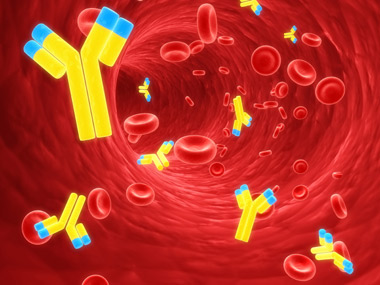














Innate immunity is the immune system that is present when you are born. It is your body's first line of defense against germs. It includes physical barriers, such as skin and mucous membranes, and special cells and proteins that can recognize and kill germs. The problem with these special cells and proteins is that they can kill a germ, but once the germ is dead, the innate immune system forgets it. It does not communicate any information about the germ to the rest of the body. Without this information, the body cannot prepare itself to fight this germ if it should reinfect the body.
Adaptive immunity is protection that your body builds when it meets and remembers antigens, which is another name for germs and other foreign substances in the body. When your body recognizes antigens, it produces antibodies to fight the antigens. It takes about 14 days for your body to make antibodies. More importantly, the body memorizes this fight so that if its meets the same antigen again, it can recognize and attack more quickly. Antibody production is one of the most important ways that immunity is developed.
There are two types of adaptive immunity: active and passive.
Vaccines provide active immunity to disease. Vaccines do not make you sick, but they can trick your body into believing it has a disease, so it can fight the disease. Here is how a vaccination works:
Vaccines are given to prevent and eventually wipe out diseases. When a vaccine is given to a significant portion of the population, it protects those who receive the vaccine as well as those who cannot receive the vaccine. This concept is called "herd immunity." When a high percentage of the population is vaccinated and immune to a disease, they do not get sick -- so there is no one to spread the disease to others. This herd immunity protects the unvaccinated population from contagious (spread from person to person) diseases for which there is a vaccine.